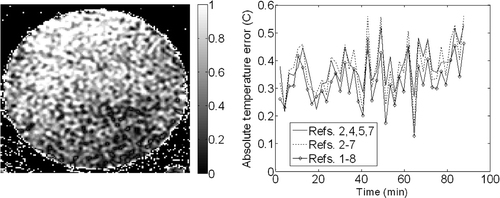Figures & data
Figure 1. Construction and materials of the phantoms used in the experiments. The 50% fat gelatine and sterilised beef bone were placed in the inhomogenous leg phantom to mimic the bone marrow and bone of a human leg, respectively.
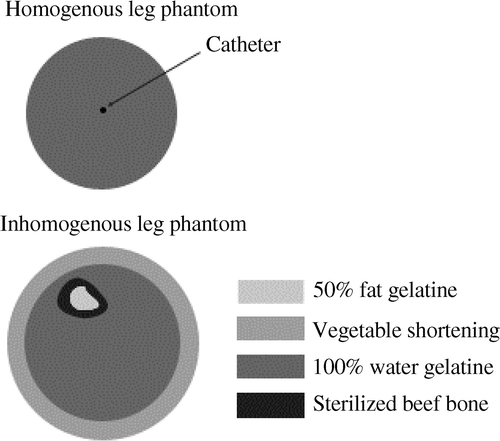
Figure 2. Left: MAPA applicator. Right: Breast applicator. A, cylindrical phantom in contact with bolus; B, membrane confining the bolus; C, heating antenna (one of four) configuration and connections; D, one of four oil-filled ‘rect’ reference sections; E, membrane in breast applicator separating breast from bolus (below membrane).
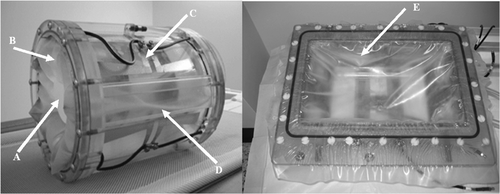
Figure 3. Left: Axial magnitude image of experimental setup and oil references for the MAPA experiments. A, one of four ‘inner’ references inside the D2O bolus; B, One of four ‘rect’ references outside water bolus; C, one of eight ‘outer’ oil references outside water bolus. Right: Axial magnitude image of experimental setup and eight oil references for the breast applicator experiments.
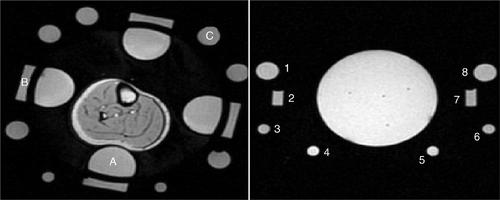
Figure 4. Long-term frequency drift of the 1.5T magnet, demonstrating the principally diurnal change as well as variable components that lead to poor predictability of the behaviour.
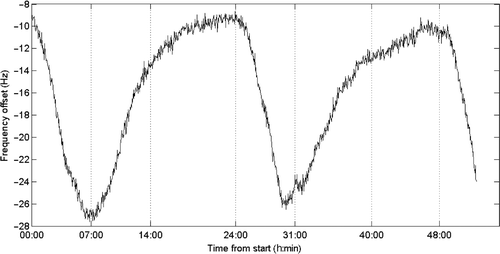
Figure 5. Left: Frequency drift over time for all trials of the MAPA phantom experiment. Right: Frequency drift over time for all trials of the MAPA leg experiment, illustrating the variability of the amount of drift that can be encountered in such measurements.
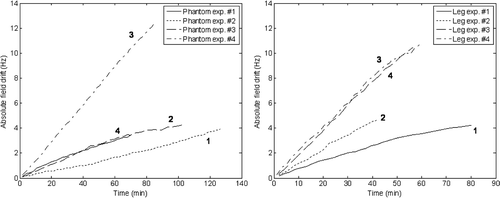
Figure 6. Results from the MAPA phantom experiment. Left: Image of the final temperature error (°C) after correction using the inner-outer reference combination. Right: Plots of the absolute temperature error for each correction scheme over time. The definition of each reference combination can be found in Methods and .
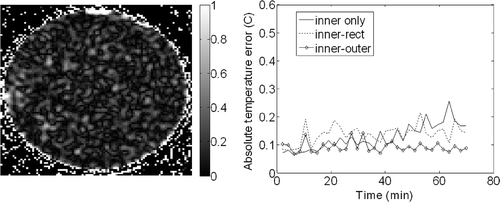
Figure 7. Results from the leg experiment. Left: Image of the final temperature error (in °C) after correction using the inner-outer reference combination. Right: Plots of the absolute temperature error for each correction scheme over time. The definition of each reference combination can be found in the methods and .
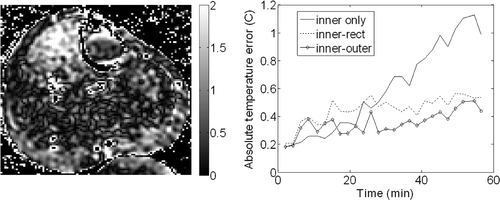
Table I. Final uncorrected temperature error (°C), final temperature error after correction (°C), and the best percentage correction for every trial of each experiment of this study. The final temperature error after correction is shown for several reference combinations.
Table II. Average temperature error across all trials of the MAPA leg and phantom experiments for several reference combinations.
Figure 8. Results from the breast applicator phantom experiment. Left: Image of the final temperature error (°C) after correction using the inner-outer reference combination. Right: Plots of the average absolute temperature error for each correction scheme over time. The location corresponding to the number of each reference is shown in .
